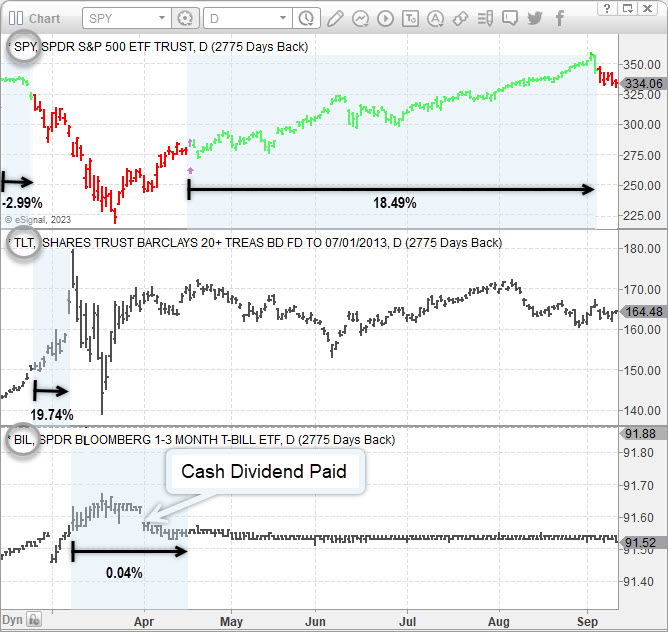Avidia Bancorp CEO Cozzone buys $49,986 in shares
Many years ago, I purchased a course on how to become an online millionaire. It cost me thousands of dollars, and I rounded up all my friends. I told them about it, and they all joined me, and we took the course together as I wanted to be rich with all my best buddies.
The sobering thing was near the end of the course. This guy had a section talking about energy suckers. This coach went on to describe the average person and their lack of drive/grit to want to become successful, live a full life of fun, and give back to the world and help others.
I spent a lot of time and effort trying to keep everyone motivated to live a better life, and it was exhausting and sucked the life out of me. I quickly experienced what the coach was talking about when he told us to stop helping energy suckers and focus on helping ourselves and those who can carry their weight and don’t need to be motivated to be successful.
Over the last few years, I have shifted away from trying to satisfy short-term aggressive traders demanding big returns, lots of trades, and who crave the adrenaline rush of being in fast-moving stocks to individuals who appreciate consistent above-average growth without the rollercoaster ride and value strategies that require little to no time or experience to use and protects their capital from big losses.
Aha, Moments!
Have you ever had one of those lightning bolt moments in your life? The one where a particular word, phrase, experience, or event changes the foundation of your very being going forward?
I had one of these not too long ago. You’ve likely all heard of the financial industry’s traditional Buy-And-Hold, Diversification, 60/40 Portfolio, and Dividend-Based strategies, yes?
Although aspects of each of these can sometimes be beneficial, the strategies, in their entirety, never made sense to me.
Why hold onto an asset that is tanking in value, taking all your recent gains with it?
- Because it’ll eventually climb back up to previous highs? Sure, that’s possible…if you have enough time to wait for that ambiguous ‘someday’ to arrive.
- Because holding a little of a whole lot of assets will ultimately create a balanced portfolio? Okay, that could work if the deadweight assets were trimmed off.
- Because holding more bonds than stocks as you get older decreases portfolio volatility and limits losses? Ummm, not when the bottom drops out of the bond markets when interest rates rise.
- Because dividends ensure you are always paid something for your investments? I can’t argue that. But if your assets drop more in value than you get paid in dividends, your account balance is still decreasing, which defeats the point.
Some say that most of these pitfalls can be avoided by having a good financial professional manage your account. I say this is absolutely true…if you have found someone who is fiducially bound to their clients, they are a technical analyst, they actively manage positions and risk, and they don’t believe in the buy-and-hold strategy because of its dangers. Suppose your financial professional does not have these skills and beliefs. In that case, there is a high likelihood that your account is suffering from AUM, aka paying a high-cost fee to have your Assets UNDER Managed.
Though we would like to believe otherwise, many financial professionals become extremely successful by doing the least amount of work possible. If you think about it, should rebalancing a portfolio each year really cost 1-2% of your life-savings? To put some numbers into this example, say you have $1,000,000 in your portfolio, and it is rebalanced twice a year with the AUM (traditionally – Assets Under Management) fees at 2%. That is a cost of $20,000. Your account must earn at least that much in a year just to break even, never mind actually increase in value.
Lightning Bolt #1 – Buy & Hold Investing Is Dangerous
Back to my lightning bolt moment – one of the earliest lessons I had after I began trading and investing was that just because I loved an asset does not mean it loved me back. It did not care that I spent hours researching and learning all I could. It did not care that I was 100% convinced that its next move was up and to the right. It did not care that I had poured my entire account balance into supporting my belief. When that asset tanked, it took me down with it…hard. And it was the best thing that happened to me – though I certainly didn’t think so then.
Fortunately, I learned this lesson fairly early in my career. I opted to leave the investment alone because there was not much left to lose. Instead of turning a ‘paper loss’ into a ‘realized loss,’ I decided to let it be and, in the process of doing so, learned another valuable lesson. I had youth on my side. I had time for the investment to hit rock bottom, stabilize, and then begin its decade-long climb back to previous highs. By the time it did, I was a much savvier investor and had moved far away from the buy-and-hold strategy to build wealth faster and sustain my wealth and lifestyle.
So lightning bolt number one – was to be sure I don’t hold onto assets falling in value and delay growth and my retirement for no reason other than laziness and/or lack of education from whoever is managing our money. There are many false beliefs in the financial industry in what we are told by so-called professionals, and this article is an eye-opener.
Lightning Bolt #2 – Market Trends and Cycles
For decades now, I have not believed in owning assets that were decreasing in value. Now, when I say this, I don’t mean the small intraday movements of stocks, bonds, or commodities. Instead, I am referring to larger multi-month price trends. When an asset has enjoyed a nice run-up and has begun to reverse its trend, I do not believe in holding those positions and watching my wealth fall with them.
Why on earth would I do that? I would rather swallow my pride and sell the asset, even at a small loss, than take a big loss that is life-changing just because we, as investors, have been falsely told that the buy-and-hold strategy is the best long-term strategy which is not true. By doing this, I have protected my capital so that I can reinvest it another day – like when the market bottoms and starts a new rally. Then, I can buy back into the asset with the money that, had I stayed in, would have been lost.
The struggle I was having was relaying this information to people in a clean and concise way. What I mean by that is, when you hear the term Buy-And-Hold, you know exactly what that means without being told. And the same thing goes with Dividends or Diversification strategies, and we know what they are. In another article, I go into more detail about just how poor of an investing strategy diversification is for anyone 45+ years of age in this article.
These strategy names have been mainstays of the financial industry longer than most of us have been alive and, thus, rarely need to be defined. But this is not what I do. I needed to create a term that myself and others could identify and understand for the style of investing that can protect investors' capital, and grow it faster, which I believe in and have been doing for over 20 years. So, my team and I put our heads together and wordsmithed our way to an answer – Asset Revesting!
Finally, A Name To A Face – Asset Revesting
So, what is Asset Revesting exactly? Allow me to break it down to its simplest definition. An ‘Asset’ is anything a person would purchase that they believe will hold its value or increase in value. Examples include precious metals, real estate, stocks, bonds, ETFs, vintage cars, stamps, bitcoin, etc.
Revesting is a combination of a couple of words. It is ‘Divesting’ yourself of an asset that is falling in value and ‘Reinvesting’ the money into something on the rise. Hence, Asset Revesting. A style of investment that is straight-up common sense.
Asset Revesting:
- Exclusively holds assets rising in value.
- Sells assets that are decreasing in value.
- Sets risk management rules to protect capital.
- Deploys position management to limit losses and lock in profits.
- Will hold cash as a position when all other assets are falling.
Have you been doing this all along? If so, you may just be an asset ‘Revester’ and didn’t know it. As ‘Asset Revesting’ is a newly coined term, the people currently managing their investments in the aforementioned ways are already ‘Revester’s.’ It turns out I’ve been one for decades!
Should You Consider Becoming An Asset Revester?
My answer to this is simple. Becoming an asset revester means you will be ahead of the game throughout most of the journey to retirement. Instead of watching your portfolio buckle under the weight of unexpected selloffs, you will be out of your positions and safely in cash. It’s also possible to profit from falling prices, which is how we, as investors, can supercharge returns.
I am not one to blow sunshine where there shouldn’t be any. Do we have trades that don’t work out – you bet, but do all of our trades have profit targets and protective stops in place to manage risk, ALWAYS!
The reality is that there is always some inherent risk when it comes to trading and investing, and you need to both prepare for and expect that. A position needs room to breathe, but that doesn’t mean we give it a mile when an inch will do just fine.
2022 was a hard one for many retired people. The bond market, traditionally a safe hedge-type play against the stock market, collapsed, taking countless retirees with it, forcing them to cut back on spending and downgrade their lifestyle.
This is the worst possible time for the majority of investors to lose another 20-50% of their wealth and then have to wait 5-15 years for their accounts to recover.
Imagine if you could have rotated your capital into the best asset at any given time during covid. Rotating out of stocks into bonds, then waiting in cash until stocks bottomed, and then re-entering the stock market for big gains and no losses?

